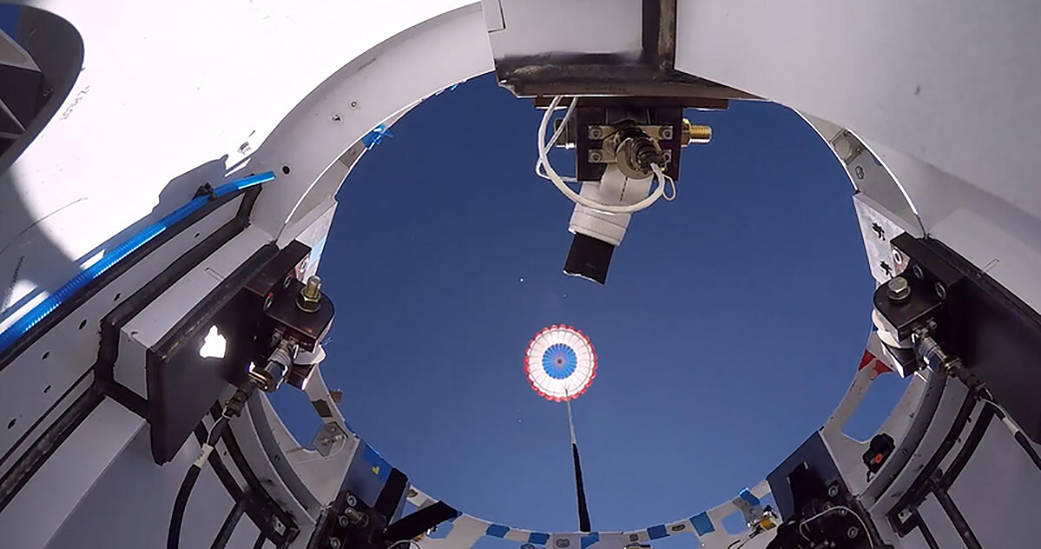NASA and Boeing have completed Starliner’s last parachute balloon-drop test designed to strengthen the spacecraft’s landing system ahead of crewed flights to and from the International Space Station.
The tests, developed by Boeing and NASA, used six balloon-drop tests of a Starliner test article to gather supplemental performance data on the spacecraft’s parachutes and landing system. Each drop test focused on a different set of adverse conditions and used pre-flown parachutes to evaluate reusability margins for future missions.
Starliner will be the first American-made orbital crew capsule to land on land. The spacecraft uses a series of parachutes and airbags that deploy at specific altitudes allowing Starliner to touch down gently in the desert of the western United States. NASA also will use the data gathered from the parachute testing to model Starliner parachute performance in different mission scenarios.
In this image, a reused drogue parachute deploys from Boeing’s CST-100 Starliner test article during the final balloon drop parachute test above White Sands, New Mexico, on Sept. 19, 2020.
Image Credit: Boeing
NASA和波音公司已经完成了星际客机(Starliner)的最后一次降落伞气球降落测试,该测试旨在在载人往返国际空间站的飞行之前加强航天器的着陆系统。
阅读全文。
这项测试由波音公司和NASA共同开发,使用了六次对星际客机测试件的气球降落测试,以收集飞船降落伞和着陆系统的补充性能数据。每个空投测试都针对不同的不利条件,并使用使用预置降落伞来评估未来任务的可重复使用余地。
星际客机将是第一个美国制造的登陆太空舱。该航天器使用了一系列降落伞和安全气囊,这些降落伞和安全气囊在特定的高度展开,使星际客机可以在美国西部的沙漠中轻轻着陆。NASA还将使用从降落伞测试中收集的数据来模拟星际客机降落伞在不同任务场景中的性能。
在这张图片中,2020年9月19日,在新墨西哥州白沙上空,波音公司的CST-100星际客机测试部件在最后一次气球降落降落伞测试中部署了一个重复使用的锥管降落伞。
影像来源:波音公司







